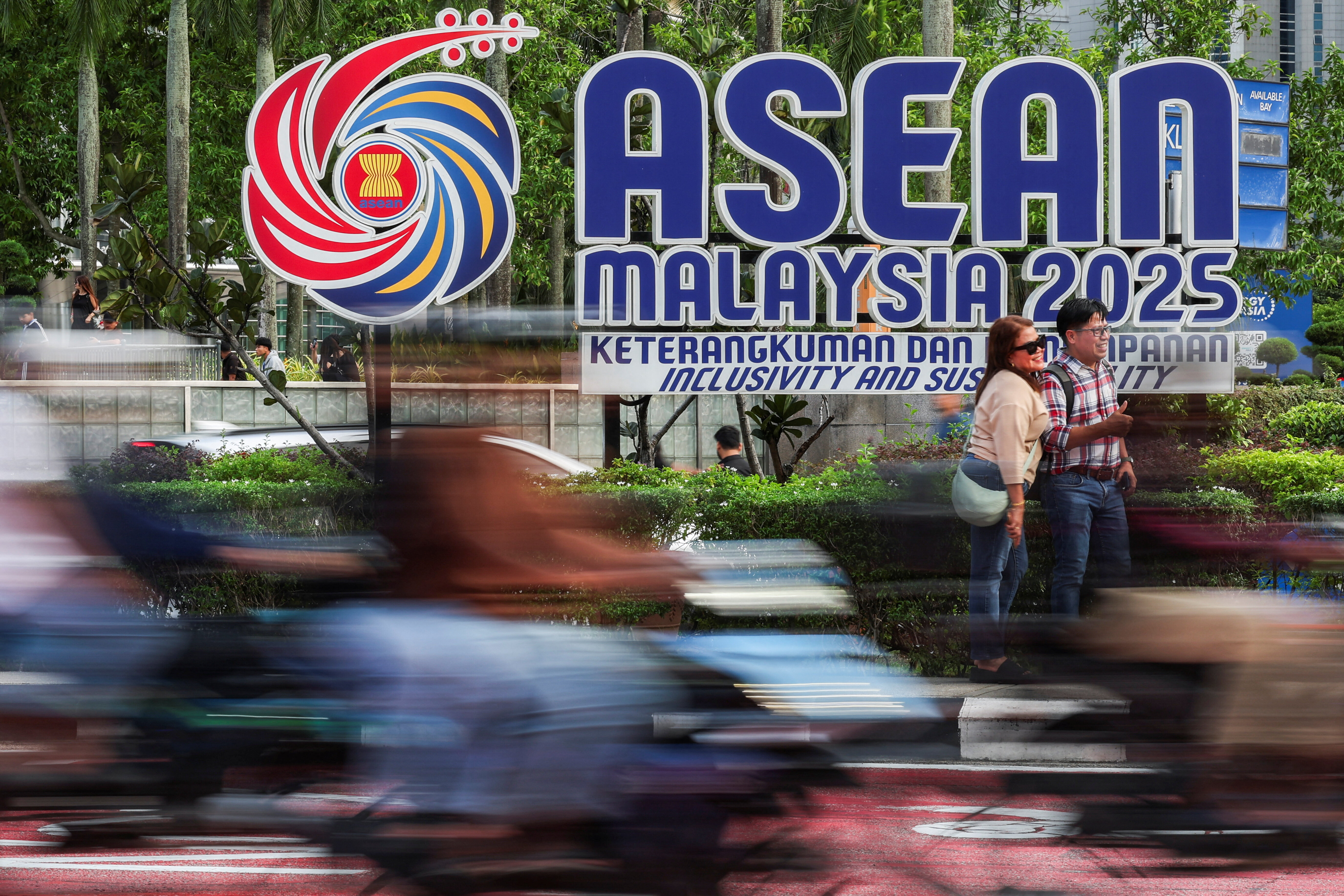Southeast Asian countries are realising the importance of high-skilled immigration

The ASEAN Economic Community and its members have successfully achieved tight-knit trade linkages. Image: REUTERS/Stringer
Aiko Kikkawa Takenaka
Economist, Economic Research and Regional Cooperation Department, Asian Development BankEric Suan
Associate Statistics Officer, Economic Research and Regional Cooperation Department, Asian Development BlogA key vision of the Association of Southeast Asian Nations (ASEAN) is to establish a globally competitive region with a single market and production base—one that embraces the free flow of goods, services, investment, and skilled labor. Goods and capitals are already flowing within the region. The more challenging problem is to improve intra-regional labor mobility.
With nearly all of the intra-ASEAN tariffs eliminated, trade grew from $68.7 billion in 1995 to $257 billion in 2017, based largely on intermediary goods feeding regional value chains. Figure 1 plots the patterns of intra-ASEAN trade (exports) in 1995 and 2015. It is clear that transactions among Malaysia, Singapore, and Thailand dominated intra trade flows in the past (Figure 1 left). In 2016, however, regional export shares became more evenly spread across members (Figure 1 left). The region developed tight-knit trade linkages and emerged as one of the most integrated economic regions in the world.

ASEAN in the past 20 years also witnessed a greater volume of the movement of people in the region. The total number of intra-ASEAN migrants have more than quadrupled, from 2.1 million in 2995 to 9.9 million in 2016. Intra-ASEAN labor mobility is largely taking place in Greater Mekong Subregion (GMS)—migrants from Myanmar, Cambodia, and the Lao PDR to Thailand, the Indonesia–Malaysia route, and migration from Malaysia to Singapore (Figure 2)

While the total volume of intra-ASEAN migration has grown substantially over the years, the major patterns of intra-ASEAN labor mobility have not changed dramatically. In the context of labor mobility, the wage differentials tend to dictate the direction and the volume. The average monthly wage in Thailand is three times above neighbors Cambodia and the Lao People’s Democratic Republic. The same is true between Malaysia and Indonesia. Singapore’s high wage premium attracts workers at all skill levels from the region and beyond.
With the establishment of the ASEAN Economic Community in December 2015, the new challenge for the ASEAN members is to achieve a “competitive, innovative, and dynamic” economy across the region. For many members, this means making the transition to high-income status. This requires substantially improved productivity and efficiency; and to build an economic and business environment conducive to innovation. A skilled workforce is essential to this process. There is growing demand from businesses and investors to attract, retain, and circulate talented human resources across the region.
One important step that ASEAN has already taken in facilitating regional skill mobility is the Mutual Recognition Arrangement initiative, which establishes common skill and qualification recognition schemes in the region. To date, these arrangements have been signed for seven qualifications, including engineering services, nursing, architectural services, tourism, medical practitioners, dental practitioners, and accounting services.
ASEAN can reinforce these agreements by introducing policies and programs that encourage movement across a wide array of skills. For example, workers with regional qualifications can be given priority in processing job applications in industry that mutually benefits source and destination economies. These schemes can be devised to maximize efficiency in sharing talent.
The need to facilitate cross border labor mobility that goes beyond the realm of the highly skilled workforce. As demographics shift across the region, so will ASEAN’s surplus and deficit labor markets. The demand for semi- to lower-skilled workers is already high and may increase to meet the growing need in services, health care, and household services. The scarcity of semi-skilled workers may in fact be more acute as workers’ educational attainment will increase rapidly in the coming years. The growing senior populations in East Asia and other developed countries are opening large migration opportunities for middle- and low-skilled workers from ASEAN, and this can exacerbate labor shortages across ASEAN.
In addition, ASEAN remains a net exporter of human capital with 60–70% of ASEAN’s international migrant workers residing outside the region, such as non-ASEAN Asian countries and the Middle East and an increasing share of them are skilled workers. ASEAN countries may want to consider collectively introducing measures to attract skilled workers back to the region, in addition to existing programs individually run by several members to encourage their nationals to return home.
Lastly, establishing and maintaining labor migration information system that collects data is critical for better informed policy decisions. Lack of data makes it difficult to conduct research to answer key policy questions—such as labor market projections and estimating the net gain or loss from labor mobility for ASEAN and its members.
The ASEAN Economic Community and its members have successfully achieved tight-knit trade linkages which contributed to rapid growth and economic success in the region. The time is ripe for members to gain from promoting the cross-border mobility of talented people in the region. The structure and instruments are there to raise the portability of skills. They can be strengthened with measures that connect regional qualifications to actual movement in ways that benefit both source and destination economies.
Don't miss any update on this topic
Create a free account and access your personalized content collection with our latest publications and analyses.
License and Republishing
World Economic Forum articles may be republished in accordance with the Creative Commons Attribution-NonCommercial-NoDerivatives 4.0 International Public License, and in accordance with our Terms of Use.
The views expressed in this article are those of the author alone and not the World Economic Forum.
Stay up to date:
Inclusive Growth Framework
Related topics:
Forum Stories newsletter
Bringing you weekly curated insights and analysis on the global issues that matter.
More on Geographies in DepthSee all
Naoko Tochibayashi
October 30, 2025






